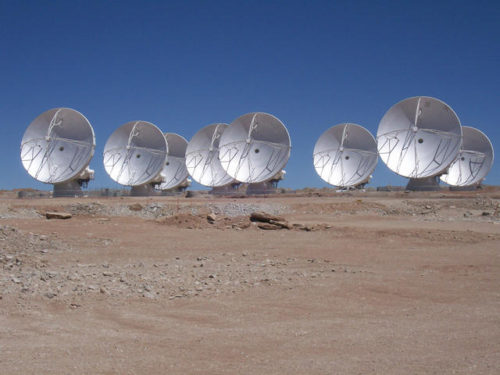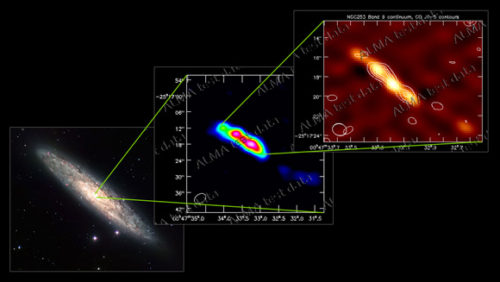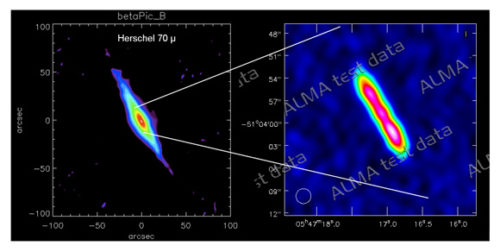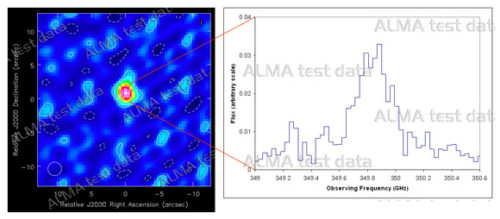ALMA Board Statement on Early Science
"At its meeting on November 16th-18th 2010, the ALMA Board noted the tremendous recent progress in construction and commissioning of the array and recorded its thanks to the ALMA and regional Executive staff and contractors for their many contributions. Eight of the 66 antennas have already been deployed at the 5000-m elevation site. The accompanying test images illustrate the potential of the full array for unprecedented scientific discovery in the cold Universe.
In preparation for the commencement of Early Science, with a subset of the ALMA array capabilities, the Board received reports and recommendations from a number of comprehensive reviews of the ALMA project. The Board enthusiastically endorses the conclusions of the reviews, and of the Director, that ALMA is on track to begin Early Science observations late in 2011, as planned. While many challenges remain, it is already clear that ALMA “works”.
It is anticipated that the ALMA Director will issue a Call for Proposals for Early Science in the first quarter of 2011. That announcement will provide more details of the expected timeline and capabilities to be offered."
The ALMA Board
18 November 2010

Fig. 1. A working interferometer of eight ALMA antennas at the high site around September 2010. Credit: ALMA (ESO/NAOJ/NRAO), S. Argandoña (ALMA)

Fig. 2. This shows the well-known spiral NGC253, with an optical image of the whole galaxy on the left (credit: ESO). The ALMA test images show dense clouds of gas in the central regions of the galaxy: (middle) the CO J = 2-1 line at 230 GHz and (right) the continuum and CO J = 6-5 line at 690 GHz.

Fig. 3. An example of ALMA’s potential as a spectroscopic instrument: on the left is the map of the molecular “hot core” G34.26+0.15, which is unresolved with the short baselines that we are presently using, whereas a section of the spectrum near 100 GHz shows a “forest” of molecular lines.

Fig. 4. This shows the emission from the disk of dust surrounding the star Beta-Pictoris. On the left is an image at 70 microns from Herschel, (Olofsson et al., SDP Presentations, Madrid, Dec 2009) and on the right is the ALMA test data at 870 microns showing the denser material in the central region.

Fig. 5. As a test of ALMA’s ability to observe broad spectral lines, we observed the quasar BRI 0952-0115, which is at a redshift of z = 4.43. The object is again unresolved on short baselines, but the 158 micron line from ionized carbon is clearly detected in the spectrum, which is impressive given that this observation took only 1 hour in total.





